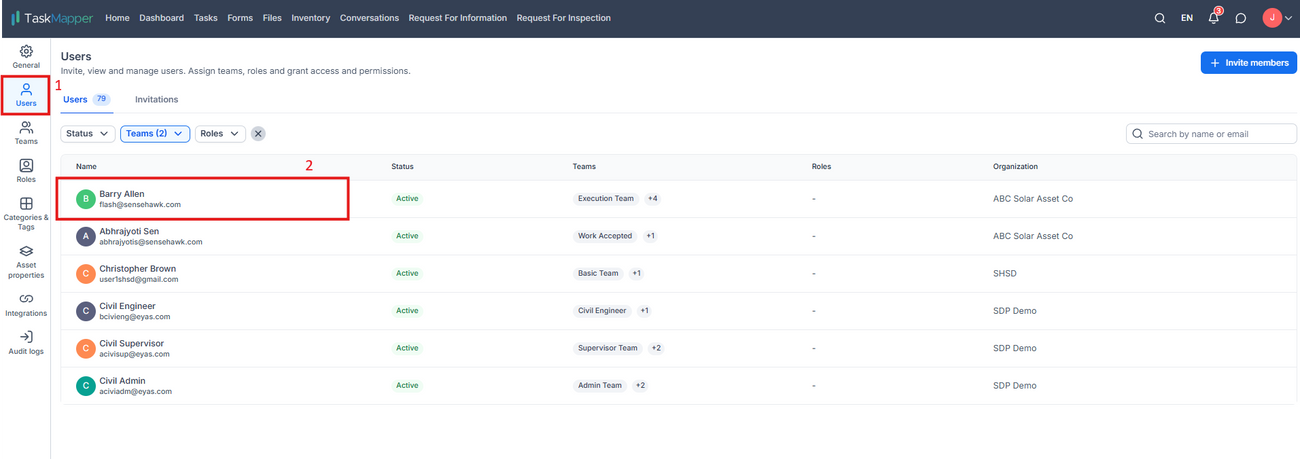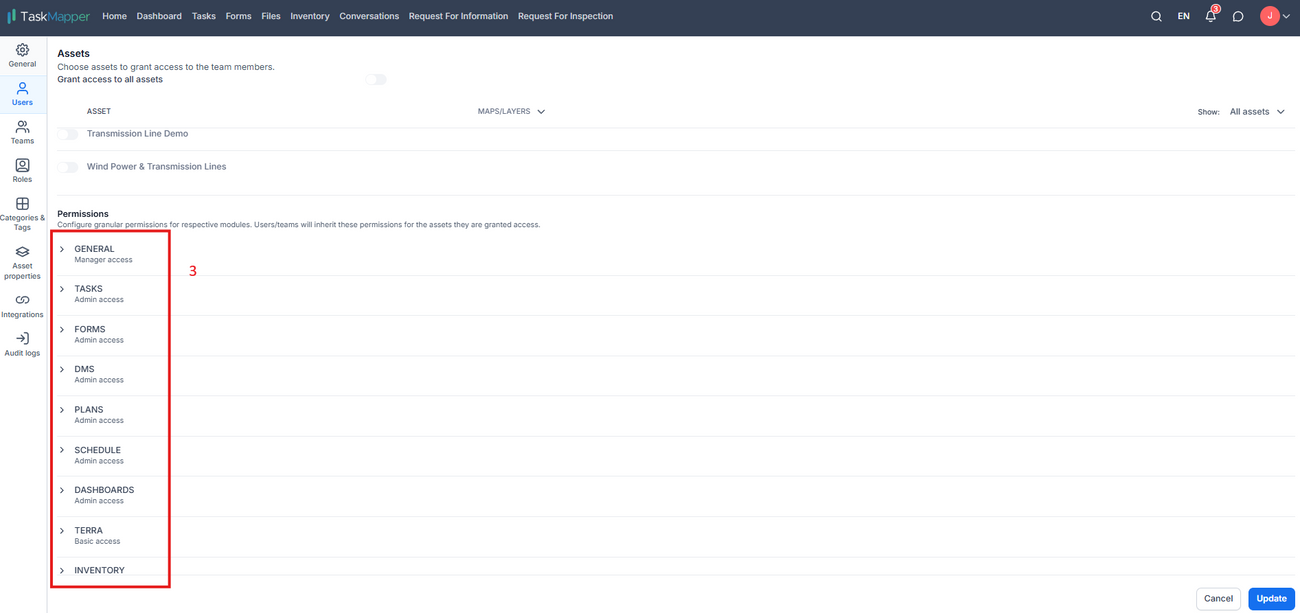TaskMapper - Permissions (old)
Last updated January 13, 2025
TABLE OF CONTENTS
Permissions
User access levels help you control what information each person can see and edit. You can easily decide the access level for individuals or groups and determine what actions they can take. This way, everyone can work effectively while keeping your account secure!
Permissions overview:
The permissions page consists of two sections: permission levels and applications. Applications refer to TaskMaskmapper's various features, while permission levels are access rights that users or roles can customize.
Permission levels:
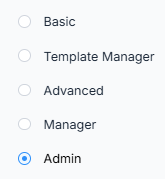
1) Admin or Manager permissions are required to set permissions. 2) Task & Forms has Template Manager permissions, which allow users to create templates. Click here to learn more about Task Templates and here for Forms Templates.
Applications/Feature types:
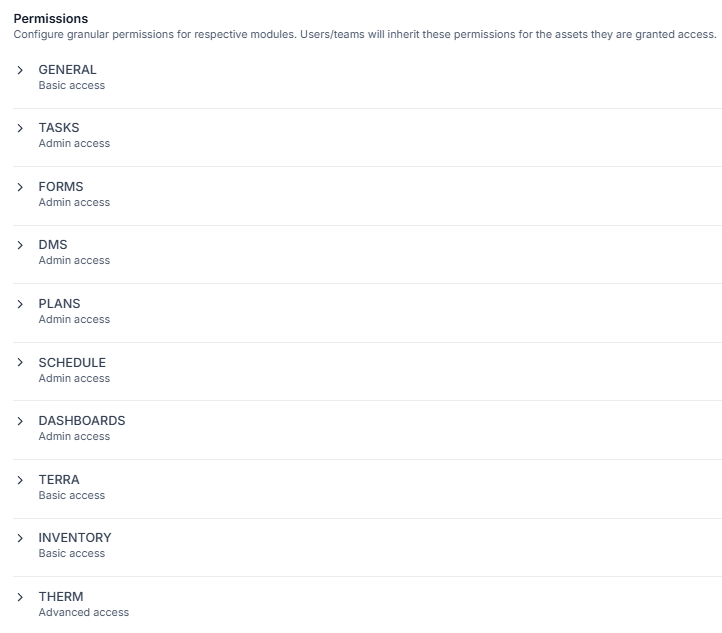
General: Manage user access to assets and define roles and teams. Below is the permission matrix.

Tasks: View and change the status of assigned tasks, attach comments, and create or modify task templates. You can also create, modify, and close tasks assigned to or owned by you. Additionally, you can modify and close all tasks and import task templates from other assets. The permission matrix below shows the access based on the assigned permission.

Forms: Forms require templates to be created in advance, unlike Tasks. The permissions for Forms differ from those for templates. Permissions for Forms include the ability to:
1. View or manage submitted forms only 2. Create a new form 3. View responses and historical submissions for all forms 4. Fill out and submit any form, regardless of assignment 5. Modify any form, which includes changing assignees, priority, dates, categories, and tags.
The permissions for templates include: 1. Viewing all form templates, such as workflows, form layouts, and settings. 2. Creating new form templates. 3. Modifying existing form templates, including workflows, forms, and their settings. 4. Importing a template from one asset to another.
Permission matrix for Forms:
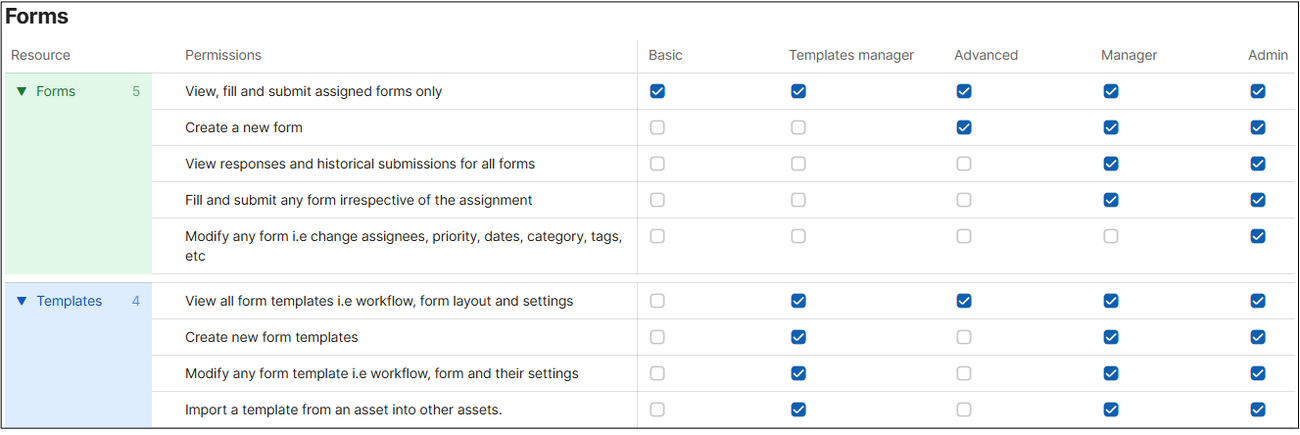
DMS: This module includes sections for documents and transmittals. In the document section, you can manage, access, view, and download shared documents. You can add new versions, share documents, and update properties only for items that you have edit access to.
Additionally, you can create document placeholders and upload files or folders. You will have access to view and download all documents. Furthermore, you can add new versions and share and update document properties for all available files and folders.
In the transmittal section, you can:
- View and create transmittals
- Access transmittal workflows
- Modify DMS templates, custom fields, and properties
- Manage members
- Perform actions on transmittals and submittals, excluding reviews.
Permission matrix for DMS:
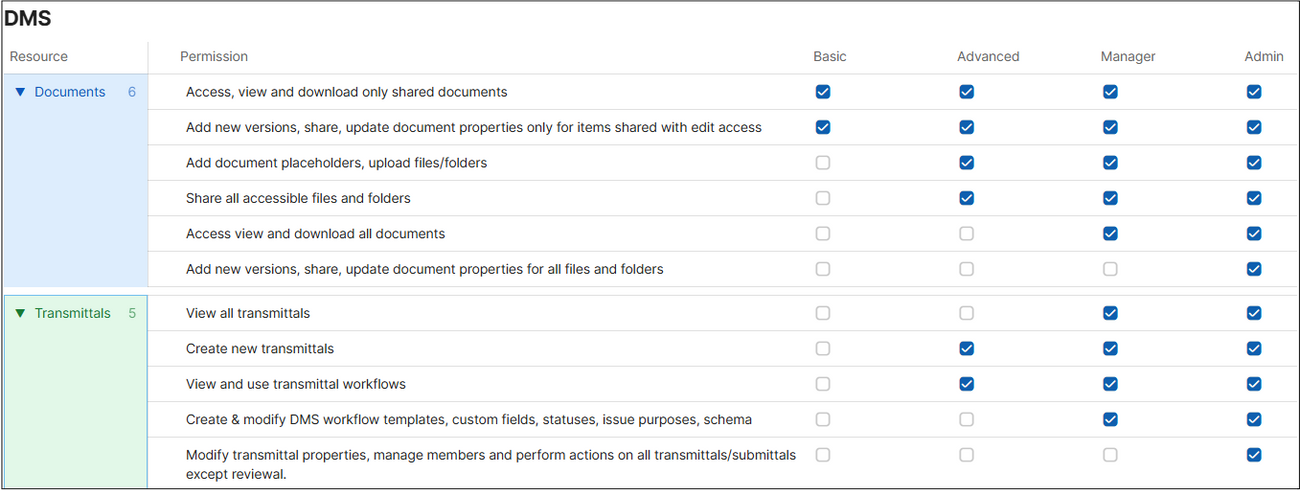
Plans: Plans give you access to all non-private drawings and their annotations/markups. You can add, update, and delete annotations/markups. View all private and non-private drawings. Toggle the privacy setting for any drawing. Below is the permission matrix for plans

Schedule: You can view all schedules, create new schedules, update all schedules and activities, configure settings, and manage versions. Below is the permission matrix for schedules.

Dashboards: Access project-related information in the dashboards. With permissions, view all dashboards. Share any dashboard. Add, update, and remove dashboards and widgets. Below is the permission matrix for dashboards.

Terra: This map-based view allows users to access and manage layers, vectors, and charts based on specific permissions. These permissions can be controlled for different sections of the map. Below is the permission matrix for each section of the map.
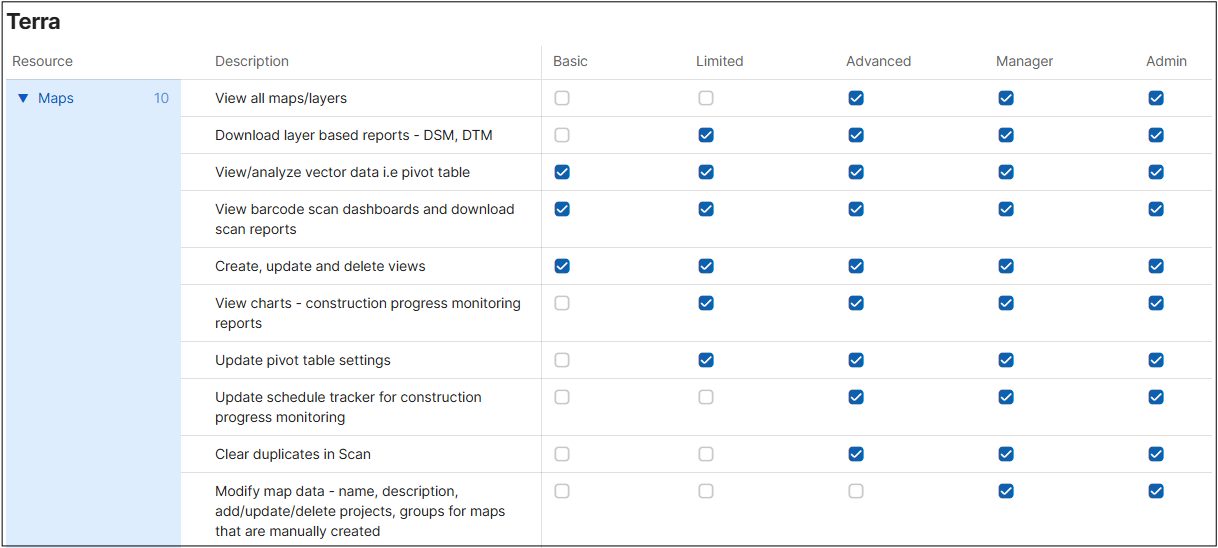
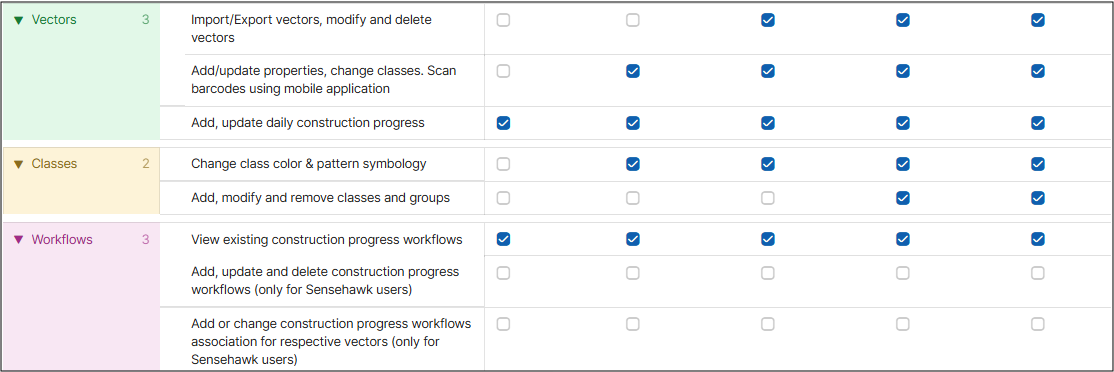
Inventory: Take control of your inventory management with designated permissions to create drafts or publish transactions.
- View and create all transaction types.
- Access item details and stock information.
- Manage warehouses and their details.
- Edit the bill of materials and unpublished transactions.
- View reports and configure various settings.
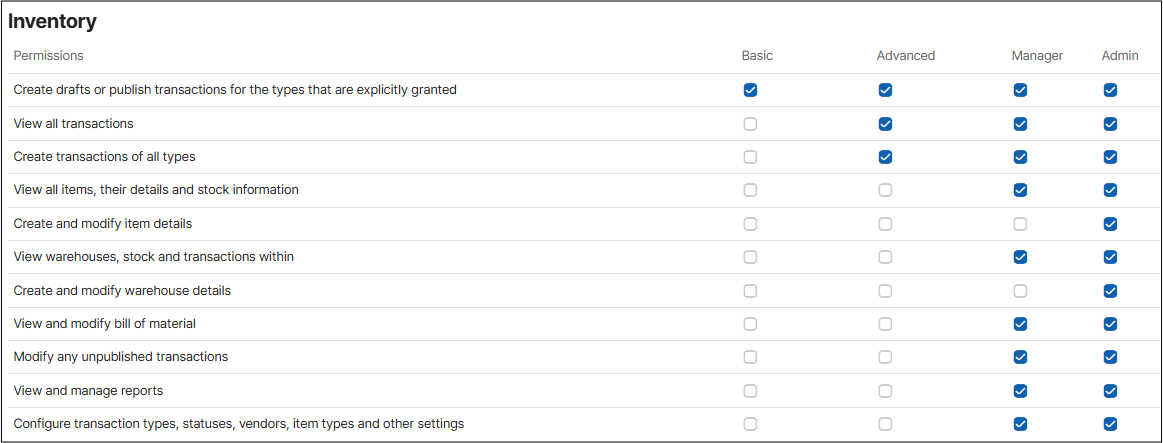
Therm: This feature provides a map-based view that allows users to manage and monitor defects according to specific permissions. Users can:
- View assigned defects on accessible maps.
- Update assigned defects' status, priority, assignees, and serial numbers.
- Add notes and attachments for assigned defects.
Additionally, users can:
- View all defects on accessible maps.
- Update all defects' status, priority, assignees, and serial numbers.
- Add notes and attachments for all defects.
- Update or reclassify defect types.

Permission Types
Permissions control user access levels. We have a couple of ways to manage permissions.
1) Role-based permissions
2) User permissions
Role-based permissions
Creating permission sets and assigning them to users and teams via roles effectively manages and organizes permissions. This method helps streamline workflows and maintain a secure and efficient system.
Default Roles:
1) Owner—The owner has full access to all modules and resources in the organisation and manages global and asset admins.
2) Global Admin - Gets full access to all modules and resources in the entire organization and manages asset admin users.
3) Asset Admin - Gets full access to all modules and resources within the respective assets.
Assigning default roles to users
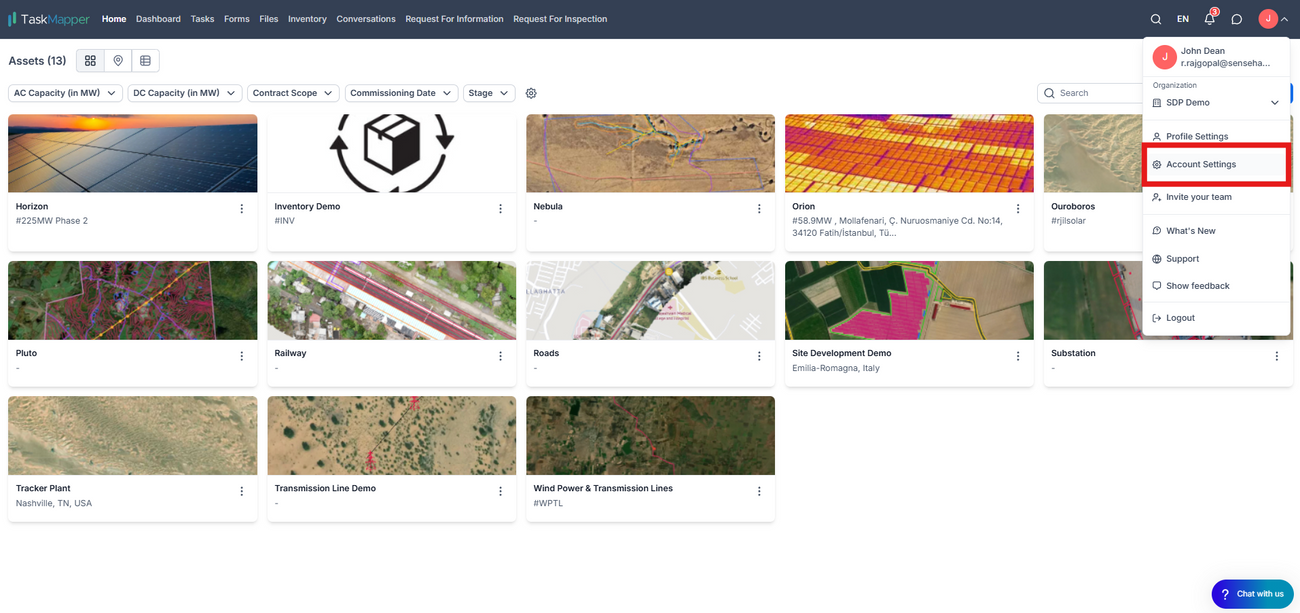
Figure 1: Account Settings

Figure 2: Roles and assigning global admin default role to users.
Custom Roles
Configure and manage roles to set specific permission levels for users and teams. Tailor access rights to ensure appropriate resource access and enhance operational security. To create a custom role, click on "New Role."

Input the role details(1), choose the members or teams(2), and select the necessary permissions to assign(3).
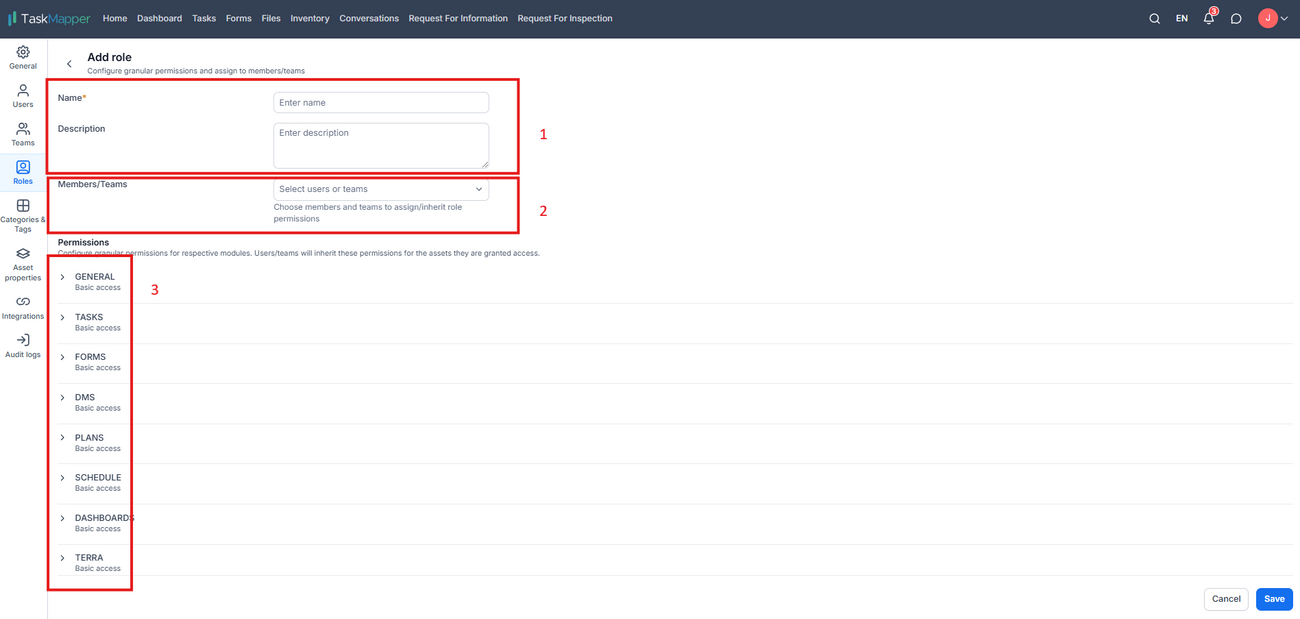
User permission
User permissions are set at the individual user level(1). They can be set up by opening a user profile(2) and updating the permissions(3).
